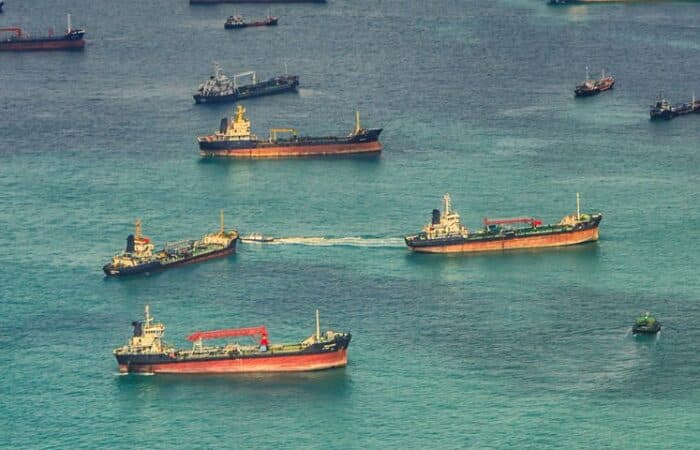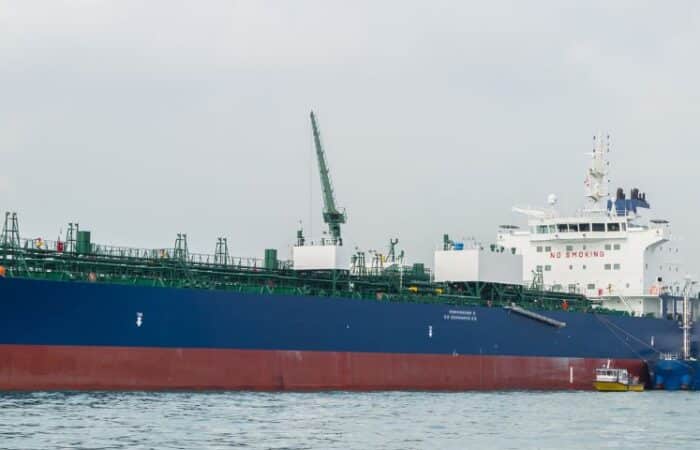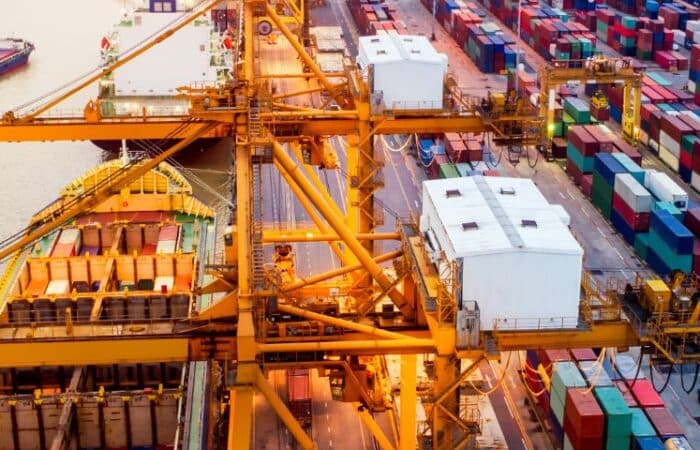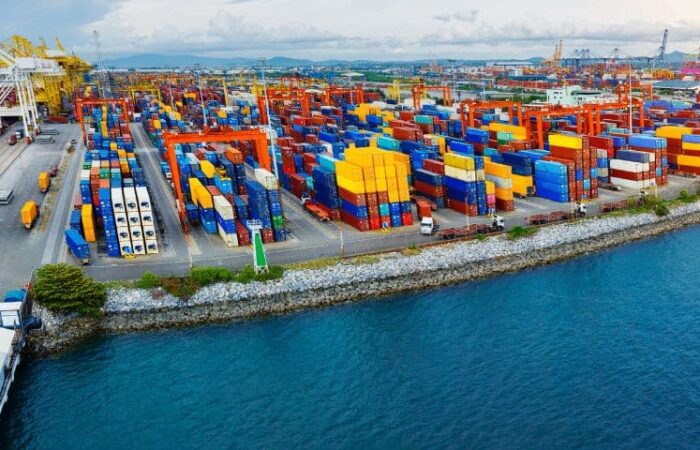Location (GNSS) Manipulation
What is Location (GNSS) Manipulation?
Location (GNSS) manipulation, also known as AIS spoofing, involves the deliberate falsification of a vessel’s geographical data. This deceptive practice often employs machine-generated locations or paths to mask the actual location. It can be executed through various methods, such as installing devices onboard that transmit false information or coordinating with third-party accomplices located onshore.
Understanding the specific risks and exposure associated with location (GNSS) manipulation is critical in safeguarding maritime operations and ensuring the safety and security of shipping activities.
How is a Ship’s Location Typically Shared?
Ships primarily share their location through GNSS via the automatic identification system (AIS). AIS is a tracking system used on ships to identify and locate vessels. Here’s how it works:
- AIS transponders: ships are equipped with AIS transponders, which automatically broadcast information about the vessel, including its identity, position, course, and speed
- GNSS positioning: the AIS transponder uses GNSS receivers (such as GPS, GLONASS, or Galileo) to determine the vessel’s precise position
- VHF data transmission: the AIS transponder broadcasts this information via very high frequency (VHF) radio waves to other vessels within range, as well as to shore-based AIS receivers
- AIS network: shore-based AIS receivers capture these transmissions and relay vessel information to AIS base stations or satellite services, enabling global tracking of vessel movements
- Display and analysis: the received AIS data is displayed on electronic chart displays, radar systems, and other navigational equipment onboard vessels, allowing mariners and authorities to monitor vessel traffic and ensure safe navigation
By sharing location information through GNSS via the AIS system, ships enhance situational awareness, promote safe navigation, and facilitate effective vessel traffic management.
How Do Ships Manipulate Their Locations?
Manipulating a vessel’s location involves various methods, some of which are more sophisticated than others. The following table shows several ways ships manipulate their location.
| Tactic | How it Works |
| Location (GNSS) manipulation | Ships deliberately transmit false GNSS signals, making others believe the vessel is located in a different position than its actual one. |
| False AIS broadcasting | Vessels falsify their AIS data, including its position, speed, course, and identity, to mislead other vessels, maritime authorities, and shore-based monitoring systems. |
| Signal jamming | Ships jam their GNSS signals by emitting radio frequency signals at the same frequency as the AIS, disrupting the broadcast of accurate information. |
| Physical alteration of navigation systems | Users tamper with the ship’s onboard navigation equipment, so it sends inaccurate information. |
These methods require varying degrees of technical expertise and resources, and their detection and prevention often require advanced and innovative technologies.
An Example of Location (GNSS) Manipulation:
A major drug bust involving the vessel “MV Matthew” in Ireland, which resulted in the seizure of 2,253 kg of cocaine worth approximately €157 million, highlighted sophisticated evasion techniques undetectable by conventional methods.
The vessel, previously known as “MV Honmon,” had engaged in location (GNSS) manipulation, using machine-generated coordinates to mask its true location and evade detection.
This manipulation included unusual sailing patterns, such as loitering and circular paths, which are indicators of deceptive practices. Managed by a Hong Kong-based company and flagged under Panama, the MV Matthew’s activities raised several red flags that were identified by Windward’s Maritime AI™ platform as early as July 2023. Despite its suspicious activities and changes in ownership and registration, the vessel’s illicit activities went largely unnoticed until its capture by Irish authorities.
Read the full story in Windward’s blog post.
The images below show a satellite image from Planet Labs, showing the Matthew was NOT where it claimed to be. The screenshot from Windward’s Maritime AI™ platform shows Matthew’s sailing path from August 19 to September 7, including location (GNSS) manipulation. The circular path shown in the zoomed-in area would be impossible for a vessel of Matthew’s size.
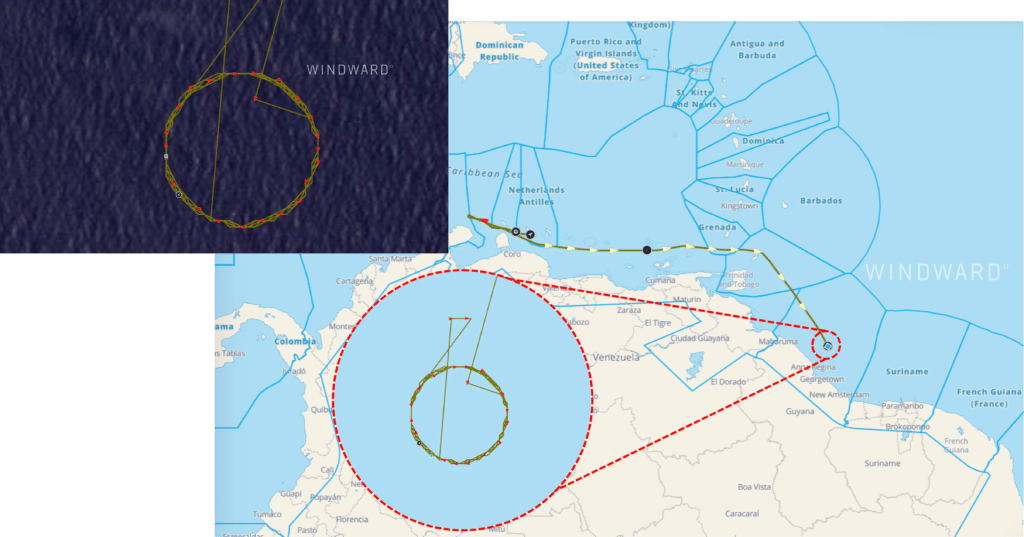
Combatting Location (GNSS) Manipulation
Maritime authorities and organizations throughout the maritime ecosystem employ various strategies and technologies to combat location (GNSS) manipulation to safeguard maritime security and ensure navigational integrity.
It’s important to note that most technology systems cannot detect location (GNSS) manipulation.
A Windward blog post notes the following highly recommended approach to combating location (GNSS) manipulation: a combination of advanced remote sensing, artificial intelligence, and positional verification methodologies, inspired by modern defense tactics.
A Maritime AI™ foundation featuring predictive analytics is key. Combining AI with sensor technology enables maritime organizations to transcend limitations, enhancing their maritime operations and decision-making processes.
- Predictive analytics forecast potential movements, considering environmental factors. They also analyze historical data and real-time visibility, offering actionable visibility.
- Tipping and cueing refers to the leveraging of AIS transmissions and remote sensing data to provide specific information about vessels, or other objects of interest. Possible issues are identified in low resolution (“tipping”), and then satellites can zoom in on that area (“cueing”) to clarify.
- Satellites can show where vessels are actually located by providing high-resolution satellite imagery, such as Planet’s network of satellites.
- Advanced radio-frequency data independently calculates locations for vessels at the time of their AIS transmissions. These calculated locations can be used to validate a vessel’s reported position.
Location (GNSS) manipulation methodologies are growing exponentially compared to previous deceptive shipping practices. This fast-growing trend has attracted the attention of regulators, navies, and defense agencies.
Best practices are nowhere near as simple as merely detecting dark activity or screening for sanctions lists, although both are still relevant and necessary. The cat-and-mouse game continues to evolve at warp speed, with complicated ID manipulation schemes and other related advanced deceptive shipping practices.















